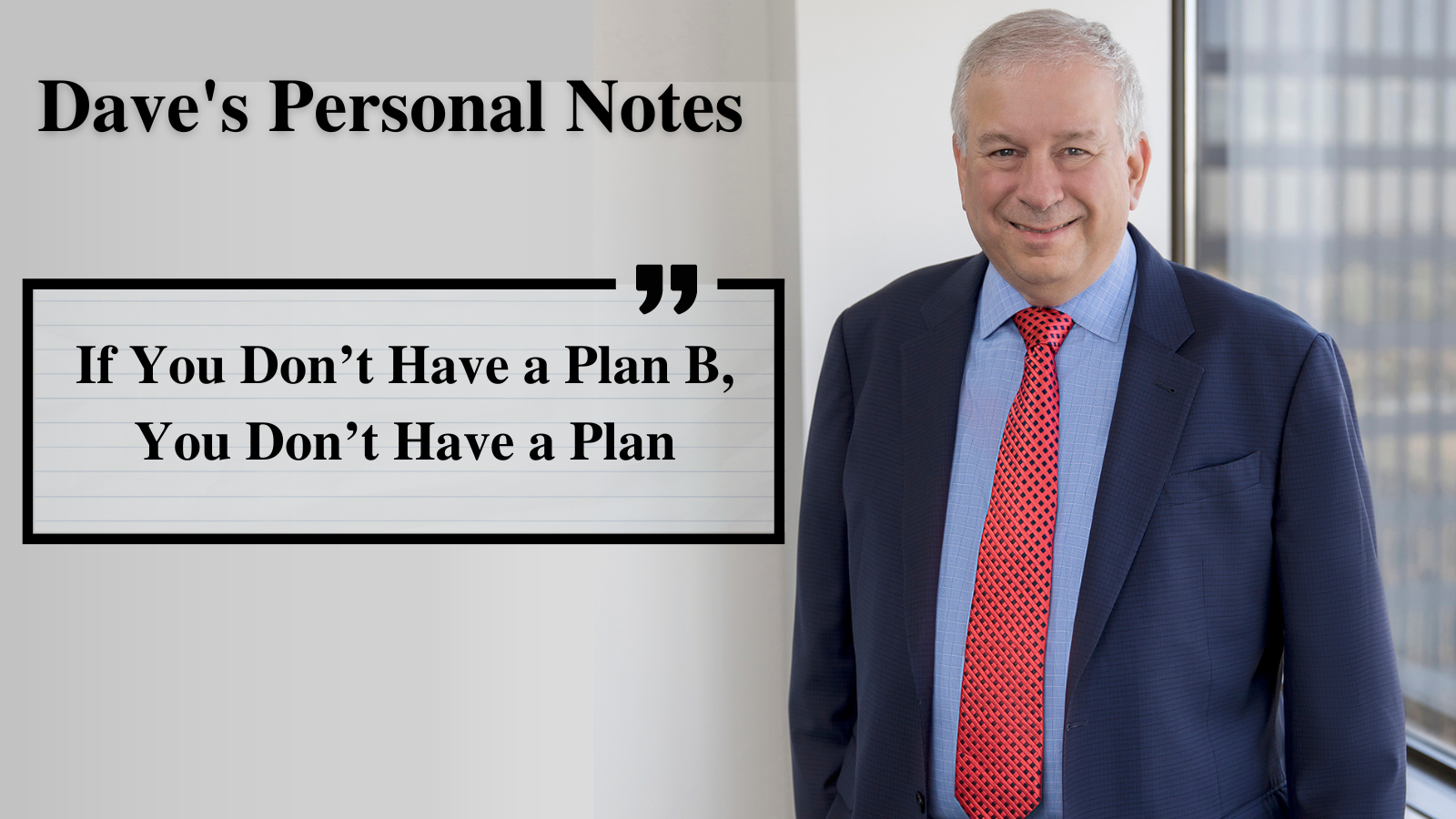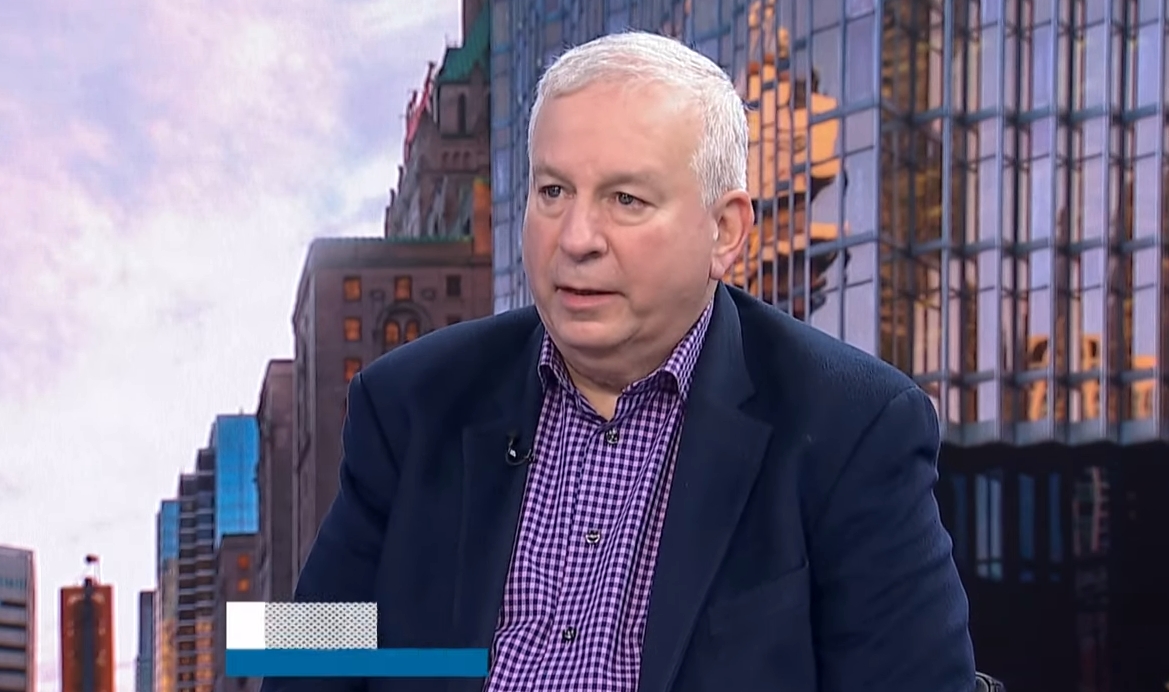
If You Don’t Have a Plan B, You Don’t Have a Plan
February 15, 2024
When I left Merrill Lynch in New York back in the spring of 2009 to come back to Toronto and focus more on my family and gain some needed work/home-life balance, I had plenty of opportunities to stay on the “sell side” and shift back to a Canadian bank. But then the Gluskin Sheff (R.I.P.) opportunity presented itself and I thought that spending time at a “buy side” shop would help round out my career. And I wasn’t wrong. I learned more in my 11 years there than I did in my previous 22 years as a classic “sell side” market economist. You know, you become chief economist at a major Wall Street bank and end up getting rated as an All-Star multiple years running in the coveted Institutional Investors rankings (is that an oxymoron?), and you think you have everything figured out. Check the ego at the door? Forget about that!
But I became very grounded in my tenure at Gluskin Sheff, and the process of rethinking how I present and communicate a forecast went through a major transformation.
It all started in my first month at the firm. At one of the weekly Investment Committee meetings, I outlined all my macro and market forecasts for the coming year. After I was done, Ira Gluskin (one of the two founders and at that time, co-CIO with my dear departed colleague and friend, Bill Webb) asked me this question:
“Rosie, what is your Plan B?”
I respond with… “What?”
Ira goes: “What if you’re wrong? Surely, you’ve been wrong in the past. Just tell us if you’re wrong, where are you going to be wrong?”
I don’t often stutter, but I sure did then. I didn’t have an answer for him.
The meeting ended with him providing me with this piece of sage advice, which has resonated ever since:
“Rosie, if you don’t have a Plan B, you don’t have a plan.”
Yikes! Even I could not believe how arrogant I must have come across at my first chance to wow my colleagues on the Investment Committee.
So, I went back to the drawing board and reformatted my presentation to include my base-case, and then all the other scenarios that I believed were in the realm of decent probabilities of occurring. And that meant introducing “tail risks”, which is something I have become adept at doing — maybe to a fault!
I showcased my most likely scenario for the economy, inflation, interest rates, the stock market, and sectors. And I added not just a Plan B, but a Plan C, Plan D, and Plan E. It took a while to sink in, but I quickly realized that there is no such thing as a sure thing and that you never put all your eggs in one basket. A simple concept, yet elegant. And Ira’s advice has been with me ever since. It is all about having a base-case view but being willing to accept the premise that nothing in the forecasting arena has a 100% chance of occurring. So I attached probabilities of the base-case occurring, and did the same thing for all the other lettered scenarios.
There were times when I would come to a meeting with no change in my base-case except for attaching a different probability estimate of it occurring. In other words, it is valuable for an investor to know how an economist’s conviction level is shifting even if the base-case doesn’t change. Not just that, but also the other pieces — how are the probabilities changing for all the other outcomes? So, I could come to an Investment Committee meeting and not change my base-case projection but alter the assessed odds of it happening, and I could tell the group that Plan B is now Plan C, and that Plan D is now Plan B, and the portfolio managers and analysts would be writing things down like crazy. And I didn’t even change my base-case!
What I did was influence the shape of the probability distribution of all outcomes. It was through this process in my early days at Gluskin Sheff that I learned how to portray an economic and financial forecast that would add value and heft to the investment decision-making process. This is not a lesson I learned at Merrill Lynch because back then, my life was going from boardroom to boardroom for hourly discussions with clients, and I didn’t ever really figure out how the brain of a money manager works: it is all about the probability curve — how perceived outcomes are shifting, and what the reward of being right is, benchmarked against the cost of being wrong across the continuum of that distribution. If I had this epiphany during those years at Merrill, I surely would have communicated to clients a far different set of forecasts than I did. Identifying the ever-changing risks to the base-case forecast is actually more useful for an investor than the base-case itself. This all goes to show that you can teach an old dog new tricks (though I was only 50 years old when this light bulb went off).
When you spend every day of an eleven-year span, as I did at Gluskin Sheff, with the investment team and in regular contact with the CIOs, it is a totally different experience than leading an economics department at a major bank in some ivory tower far away from all the action. I figured out late in life (but not too late) what makes an institutional investor tick, and I could be a more effective cog in that wheel. Not only that, but sitting with the PMs day in and day out, I could see how the best of the best were the ones that showed the greatest discipline: “Never fall in love with your portfolio”, I was told — and I began to think that as an economist, I should also “never fall in love with my base-case forecast.” It often won’t love you back! In other words, always be on the lookout for non-confirming evidence regarding the base-case view, and always be aware of what your blind spots are. These are critical ingredients for success, whether you are a wealth manager, analyst, strategist, or economist.
Of course, there is a gray area between being confident in your base-case and showing readiness to shift to plan B — the willingness and ability to be flexible. There is no room in the forecasting business for arrogance or stubbornness, and shame on me when I’m guilty of this (then again, we’re only human after all). But as I watched the portfolio managers at Gluskin Sheff trim or abandon positions because the markers they had initially set down were simply not achieved, as an economist, I learned to set down my own guidelines as to when it would be appropriate to change my call. The most effective PMs were the ones who exhibited that discipline and did not let emotions get in the way: if the call was not working out, then get out and move on. These were the ones that never blew up — and that is a key element of success in the investing world because it could take you years to crawl out of a faulty position that you stuck with for too long. And that is how macro forecasts should be treated too.
Now, today it might be said that I am not following this simple rule, as all my economist competitors have been throwing in the towel on the recession call while I stand-pat on the view. As I often say, “delayed is not derailed”. It all feels like some combination of 2000 and 2007 to me. So, Plan A, (a 2024 recession) in my view, has a 60% chance of occurring. I believe that interest rates still matter, but they can often work with long lags. I believe that there are times, as we saw in 2023, when there are positive offsets (in this case from massive fiscal stimulus and the last vestiges of pandemic-era “excess savings”). But these are not recurring factors, and the lags from the damage the Fed has done still lie ahead of us. So no — I’m not being stubborn. I just know history and I understand that the business cycle has not been repealed, there are no new eras, and again, nothing is more important to a credit-driven economy than interest rates. As I think of Plan B, it is not whether we avoid recession and end up in some so-called “no landing” or some perpetual “soft landing” but rather that this recession proves to be deeper, and last longer, than anyone currently expects (no asset class is priced for this, that much is for sure). I assign a 25% chance of the Plan A recession turning into a true “hard landing”, replete with a nefarious default cycle and credit contraction. Of course, Plan C is that I am completely off my rocker, and we see the economy emerge unscathed and that Goldilocks is something more than just a fairy tale —to that, I attach 15% odds. Not impossible, but certainly implausible.
Recent articles
Rosenberg Research ©2025 All Rights are Reserved



